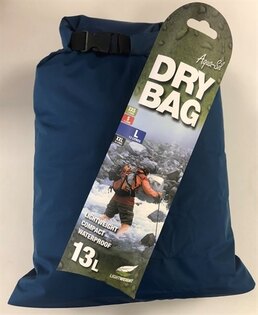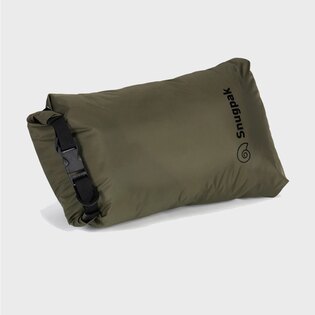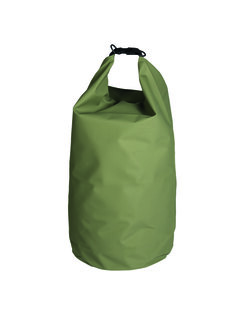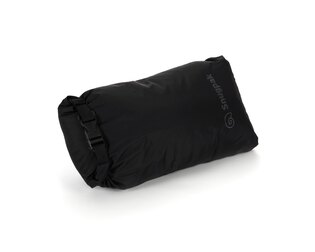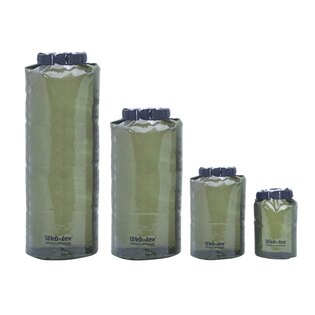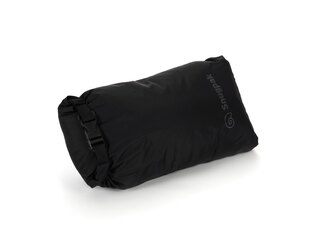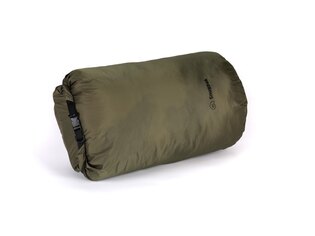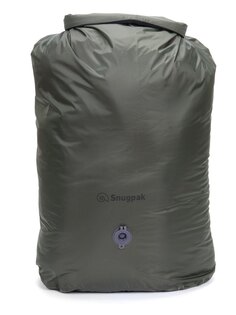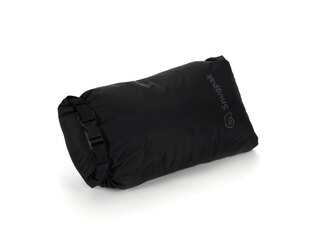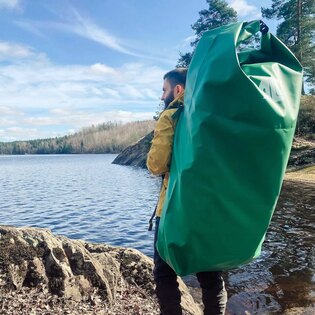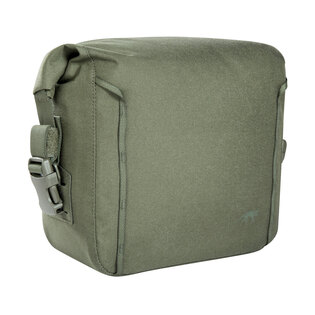How to dry clothes outdoors in winter?
Winter camping and multi-day hiking have their undeniable charm. Hand in hand with this, however, there are several fundamental pitfalls that must be quickly resolved, especially in winter, otherwise the "expedition" may end prematurely. Among the main pitfalls are cold and dampness. Once your clothes get wet outside in the winter, it is quite difficult to dry them again. But we have a few tips for you on how to manage it.
The weather can be unpredictable. If you get wet in the summer, it's not such a problem. You wait for the clouds to clear and lay out your wet clothes in the sun. But what if your clothes and gear get wet in the winter? Physical activity naturally makes you sweat, your spare pieces can get wet in your backpack due to condensation, and in the least fortunate cases, you can slip and fall into a puddle or stream. That's when it's time to take action.
Therefore, it is advisable to have a plan in advance so that such situations do not surprise you. Having dry clothes, especially in winter, is not a luxury, but an absolute and essential necessity. So how do you ensure that even on cold or frosty days you have your clothes dry again as soon as possible?
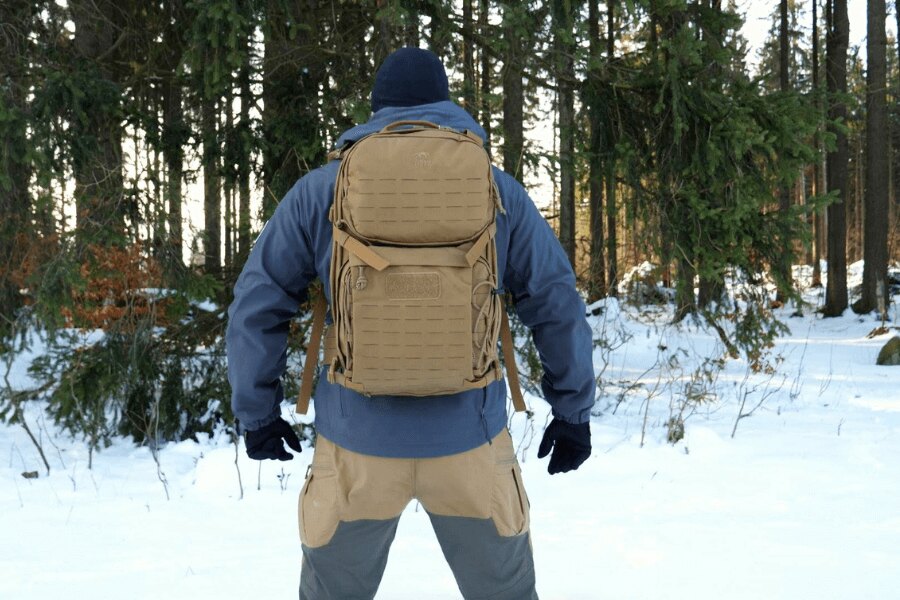
Having dry clothes in winter is not a luxury, but an absolute and essential necessity.
Prevention above all
In order to stay dry at all times in winter, you should pay attention to prevention. Above all, choose materials that are functional, wick moisture away from the body well, dry quickly and have the lowest probability of getting wet.
The right materials
- For the bottom (absorbing) layer (that's the one you wear directly on your body), forget about cotton, at least the 100% cotton, even though it's certainly comfortable. If you want to use cotton for your outdoor (not only winter) trips, then it is advisable to combine it with a functional synthetic material. It will wick moisture away from the body a little better and dry faster. An even better choice is merino wool, which, as a natural material, can keep you warm even when it's wet, and it also wicks moisture away from the body to the surface. Underwear combining merino and functional synthetics also has good properties.
- The second, insulating layer (sweatshirts, sweaters) should wick away moisture taken from the first layer well, maintain body temperature and be breathable at the same time. Various fleece materials, for example, have excellent properties. This article will help you find your way around the sweatshirts we offer at Rigad.
- The task of the top layer is to protect against external influences and at the same time to ensure that the insulating layer underneath remains dry. Therefore, it should be at least partially windproof, waterproof and mechanically resistant while maintaining good breathability. Read how to choose the right winter jacket.
Layering
Have you selected all layers of clothing made of quality functional materials? Great. But in order for the whole magic to work and for you not to sweat unnecessarily, but also not to freeze, you need to combine these layers correctly. The so-called "onion model" is proven, which consists in the fact that the individual layers effectively complement each other. At the same time, the basic lesson applies that it is better to have several thinner layers, some of which you can put away during increased activity or when it gets warmer, than to wear one thick layer that you can't do much with.
Functional features
Part of prevention is also the correct choice of clothing and equipment, not only in terms of functional composition. For example, you should always wear high boots in winter to protect your ankles from water from puddles and the like. Sometimes you simply cannot avoid ice falling under your feet in the terrain. It is also a good idea to have outdoor trousers equipped with drawstring cuffs at the end of the legs, which you slip into your shoes. For greater efficiency, you can also wear waterproof leg gaiters over your trousers. And of course, the top layer of clothing is also important, which should efficiently wick away water and moisture from the outside.
Dry them!
Individual pieces of clothing must be removed from the source of moisture. If it's raining or snowing outside, then for example under a tarp or a rock overhang. Anyway, somewhere where the clothes won't get wet unnecessarily. Then hang the clothes on a rope or paracord, which should be one of the essentials you will need on the way during winter camping. The advantage is frost, which, compared to temperatures above zero, reduces air humidity and at the same time freezes clothes "to the bone". You can get some of the moisture out of your clothes by letting them harden in the cold and then simply "beating out" the ice that has formed.
However, some moisture will still remain inside. For these purposes, it is advisable to create at least local heat. Of course, the first thing that comes to mind is to make a fire – if it is possible in the given area – but there are also gas heaters for camping, which, however, you probably won't carry in your backpack. And if you do manage to carry the heater itself, then you may no longer carry the energy source for it. Therefore, such a solution is especially suitable for situations where you go camping by car.
If you light a fire, in addition to paracord or rope, you can use elements that are commonly found in nature – branches or stones – to hang wet clothes. However, do not forget to hang the clothes at a sufficient distance from the fire so that they do not burn which would do more harm than good.

Moisture is one of the main pitfalls of winter hiking and camping. Therefore, it is necessary to pay attention to prevention and to act quickly when getting wet.
General procedures
Air circulation
No matter how you are going to dry your wet clothes outside, you should always follow certain general procedures. The first step, as we said before, is to get the clothes away from the moisture source. Otherwise, there is no point in trying to dry it. However, sufficient air circulation should be ensured in the place where we place the clothes. In other words, there should be at least a little wind here. Stretching a clothesline or paracord in the middle of the tent won't help much. Your wet clothes will also get all your other equipment wet.
A temporary shelter
That is why it is advisable to take a tarp with you on the trip, from which you can (with the help of the aforementioned paracord) create a temporary shelter next to your bivouac or bivi bag. And you can dry clothes much more easily under this shelter.
Heat
If at all possible, add heat. Above, we discussed how to do it. The easiest way is to start a fire. Well, then you just have to wait. Naturally, the wetter your clothes are, the longer they will take to dry.
Change quickly!
In any case, do not stay in wet clothes longer than necessary. Especially when you stop after a day's march, immediately change into dry clothes. And if you don't have dry clothes and you don't have anyone to borrow them from, then it's better to end the trip early than to take them away with a cold or something worse. Staying put in wet clothes is one of the biggest mistakes you can make when winter camping – you can read about this and other mistakes in our Top 10 Winter Camping Mistakes article.
How to store wet laundry?
To store spare clothes and a sleeping bag, we recommend using a waterproof bag that you can simply put in your backpack and thus protect not only your clothes, but also electronics and other valuables from getting wet. For example, models of the Dri-Sak series from the British company Snugpak, which you can purchase from our e-shop, are ideal.
Readers are further interested











































































































































